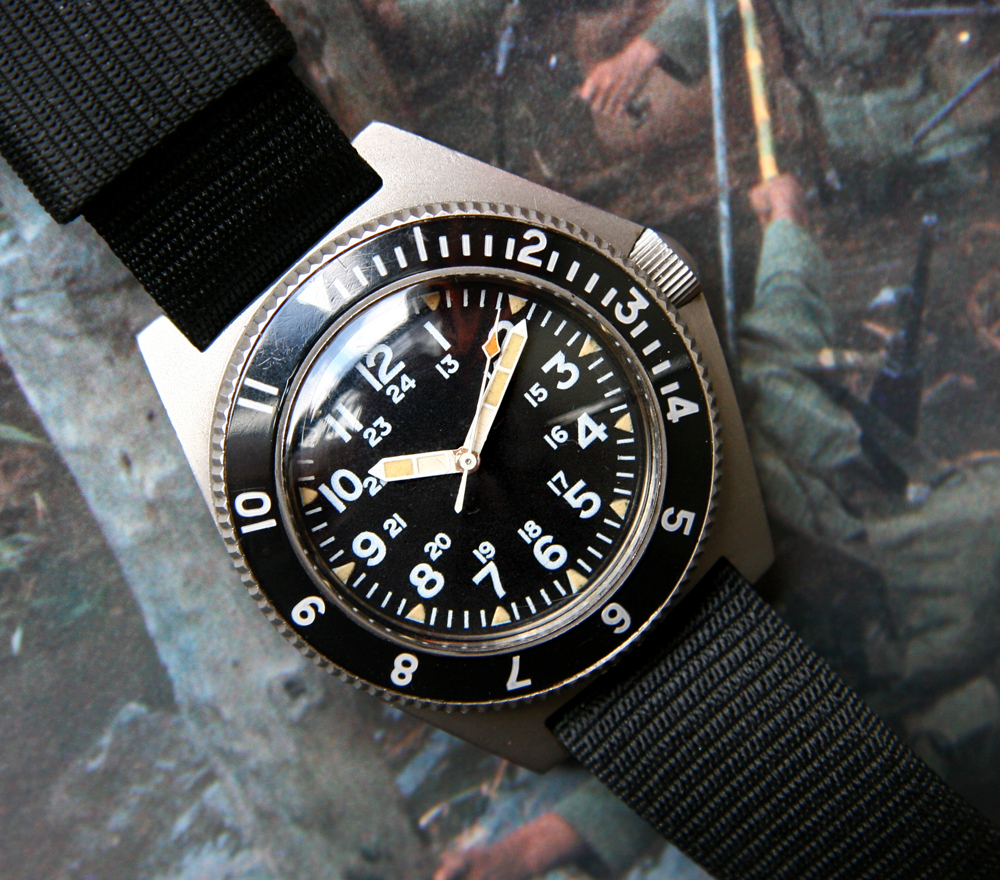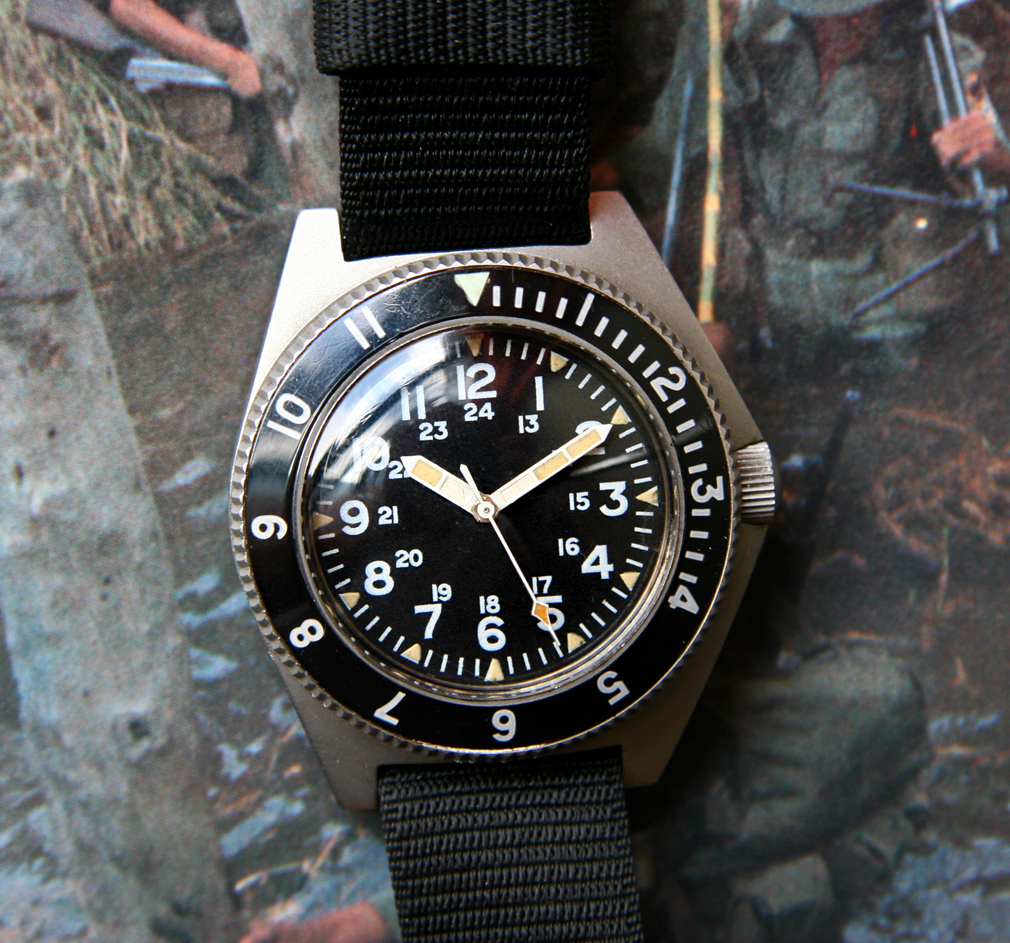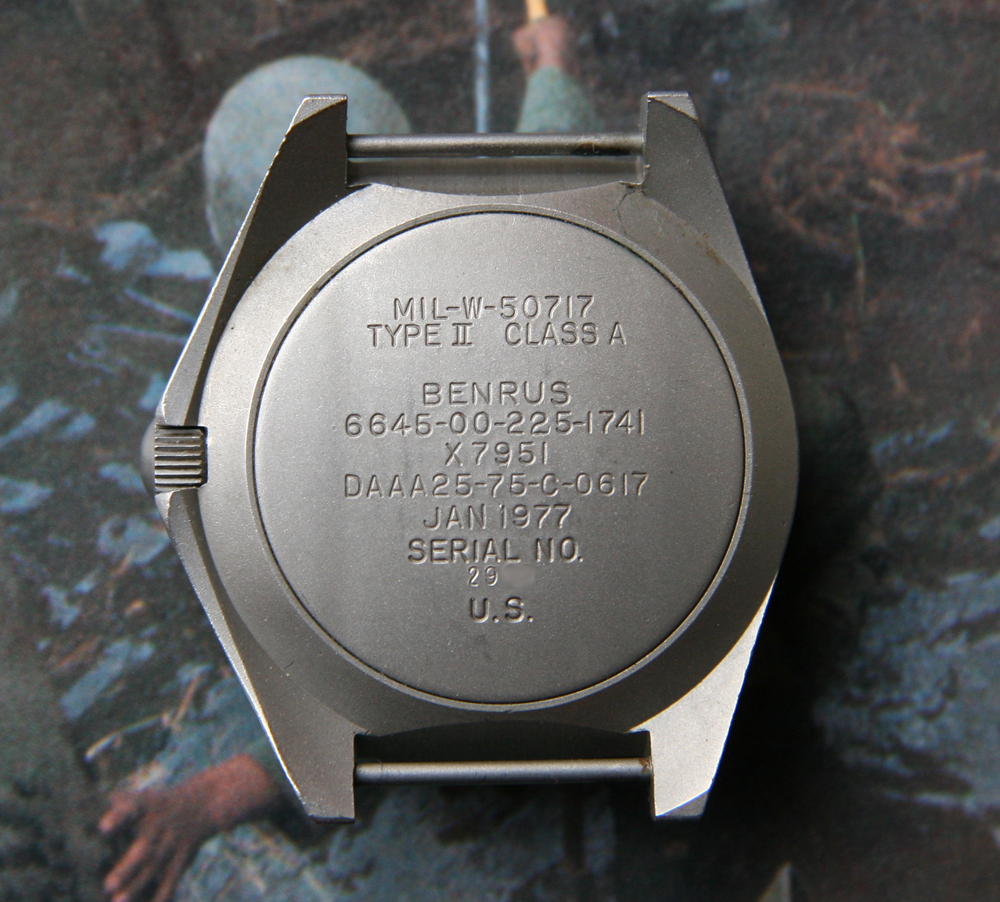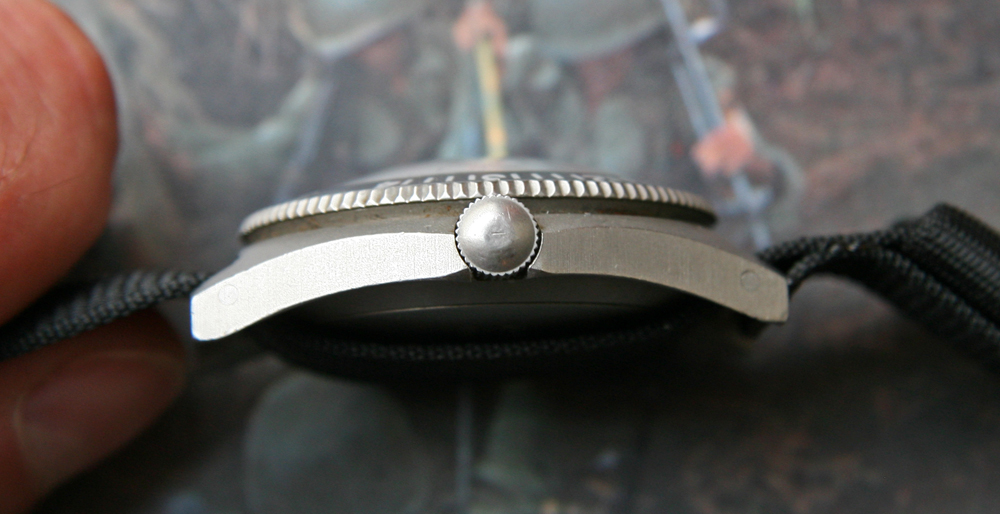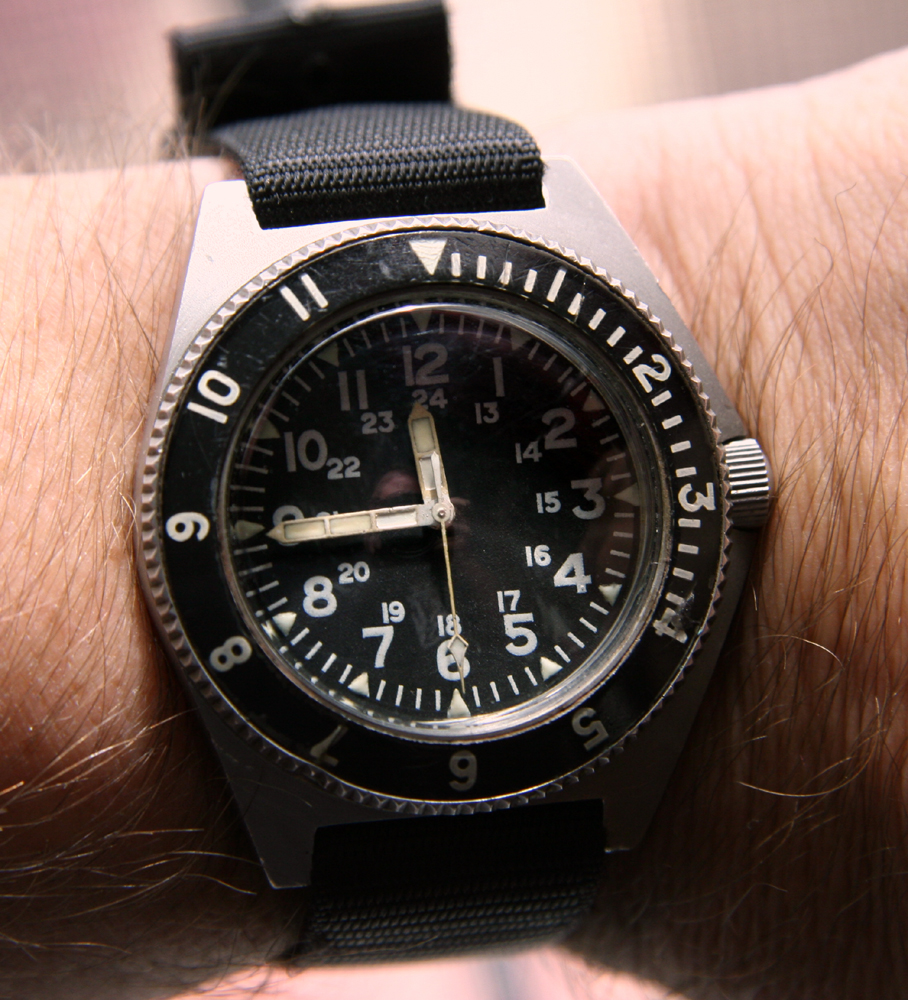Military-issued wristwatches are one of the hottest categories of collectible vintage watches out there. When we talk about Mil-Watches we are speaking for the most part about timepieces that have been officially issued to a given country’s armed forces as an essential part of a soldier, airman, marine or sailor’s equipment. For example, navy divers may require a dive watch to aid in timing their decompression intervals and pilots may require a chronograph to record mission flight time or monitor gas consumption. Back in the pre-quartz days, these watches were all analog mechanical watches that possessed certain high standards of durability and functionality as required by the needs of a particular branch of the service. Therefore, these older Mil-Watches not only have the standard charm of vintage watches in general but also the mystique of possibly having seen combat or other rigorous military action. It’s no wonder that not only veterans but also those of us who have not been in the military are drawn to the vicarious thrill that an issued military watch can convey, as well as a sense of paying homage to the warriors of days past by the mere act of strapping it on. There’s something about a vintage object with a tale to tell and with the high price of many Mil-Watches nowadays, it’s clear that these special timepieces are telling a very appealing one across a wide spectrum of collectors. Better yet, genuine military watches are immune from the normal aesthetic standards of most other collectible timepieces where Mint Condition is generally the highest standard and finding a desirable watch that has never been worn is akin to finding a Grail. With Mil-Watches, the collector wants to see the use in the watch, the nicks and scars that could well denote combat and adventure. Up to a certain point, the more WABI the better!
It’s not possible to go into every Milwatch out there in in these posts, nor do I have the specific expertise required to do so. Not even close. For that I would recommend starting out with something basic and general like the Concise Guide to Military Timepieces, which, while not the world’s greatest reference book, will give you a general overview of what constitues a Mil-Watch and what’s out there in terms of variety. Even better would be a visit to the Military Watch Resource Forum where everyday you can find informative and spirited conversation on all things Mil-Watch great and small. They also have an excellent sales corner (membership required) where some of the most fantastic pieces crop up in all price ranges.
What I will do is discuss some of the Mil-Watches I have been lucky enough to own to give a small taste of their appeal and hopefully show what makes them special.
Benrus Type II

A great first military watch for any collector is a Benrus “Type” watch. These hearty, monocoque watches were issued by the United States during the Vietnam War and immediately after and were generally assigned to special personnel such as SEALs, Underwater Demolition Teams and other Special Forces who had need of heavily water resistant diver-style watches with elapsed time bezels and ultra-legible hands & faces. I’ve not yet had an earlier Type I, which does not have numerals on the dial but Submariner-like symbols and are actually the preferred model to collect.
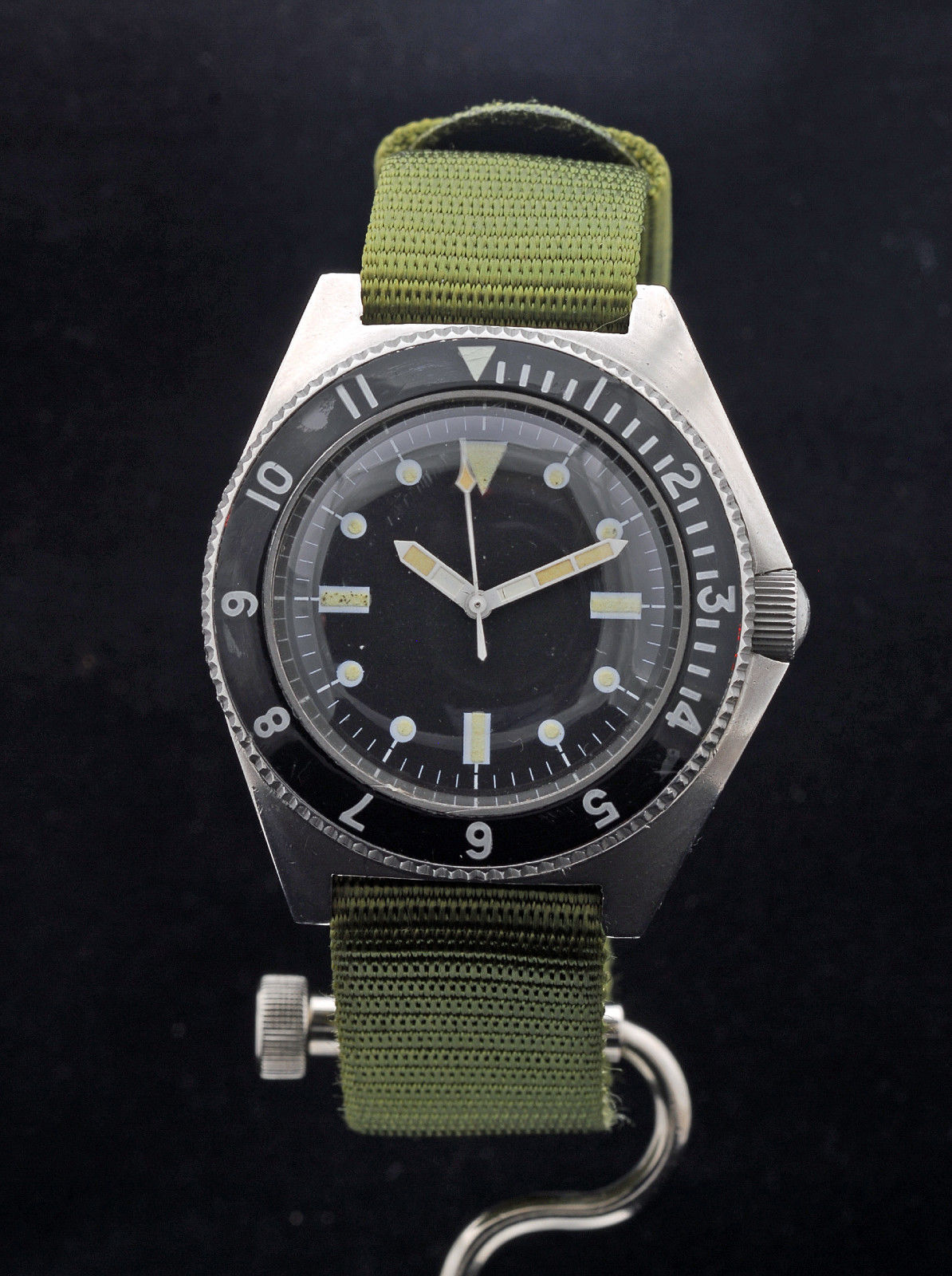
Benrus Type I (from eBay auction)
But I have had a few Type IIs with their classic 24-hour dials and the look and feel is very Spartan and tough. Most will have a complex series of US Quartermaster codes on the back, although there are some without all this text that are refereed to as “Sterile”. These Sterile versions are the most sought after Benrus Types, as they are thought to have been issued to covert operatives who were performing dangerous missions behind enemy lines.
You will note that the back of the above Type II example says “Class A”. This denotes the standard phosphorescent self-luminous of the era, a slightly radioactive Tritium-energized compound. But one can also find on rare occasions “Class B” Types, which denote a watch without any luminous material at all. It is thought these Class B Benrus Types were issued to certain members of US atomic submarine crews due to the fact that the radiation detecting equipment on such vessels was so sensitive that it could be tripped off by standard Tritium lumed watches.
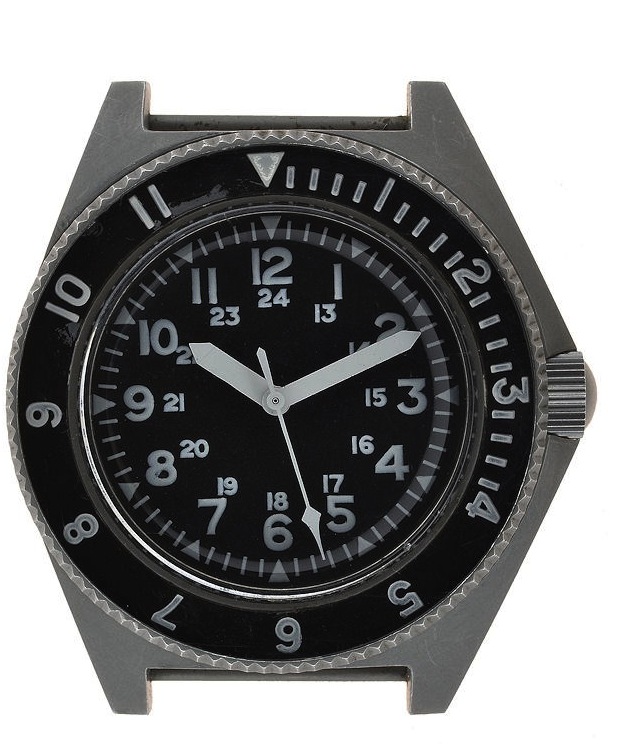
Class B Type II, ca 1980 (pic from FinerTimes.com archive)
Things to look for with Benrus Type watches regarding their originality and therefore most desirable condition are: fixed spring bars; “dimpled” screw down crown; correct hack setting (second hand stops when crown is pulled out); acrylic bezel insert in good condition; correct “double-domed” acrylic crystal; original dial and hands with Tritium luminous (except in the case of “Class B” examples, as above); unpolished case; and original single-keeper nylon Nato-style strap.
If a Benrus Type has all these elements intact, they can fetch $1500+ for a Type II, more like $2k for a Type I and even more than that for the very rare Class B and Sterile models.
More to come on Mil-Watches!

